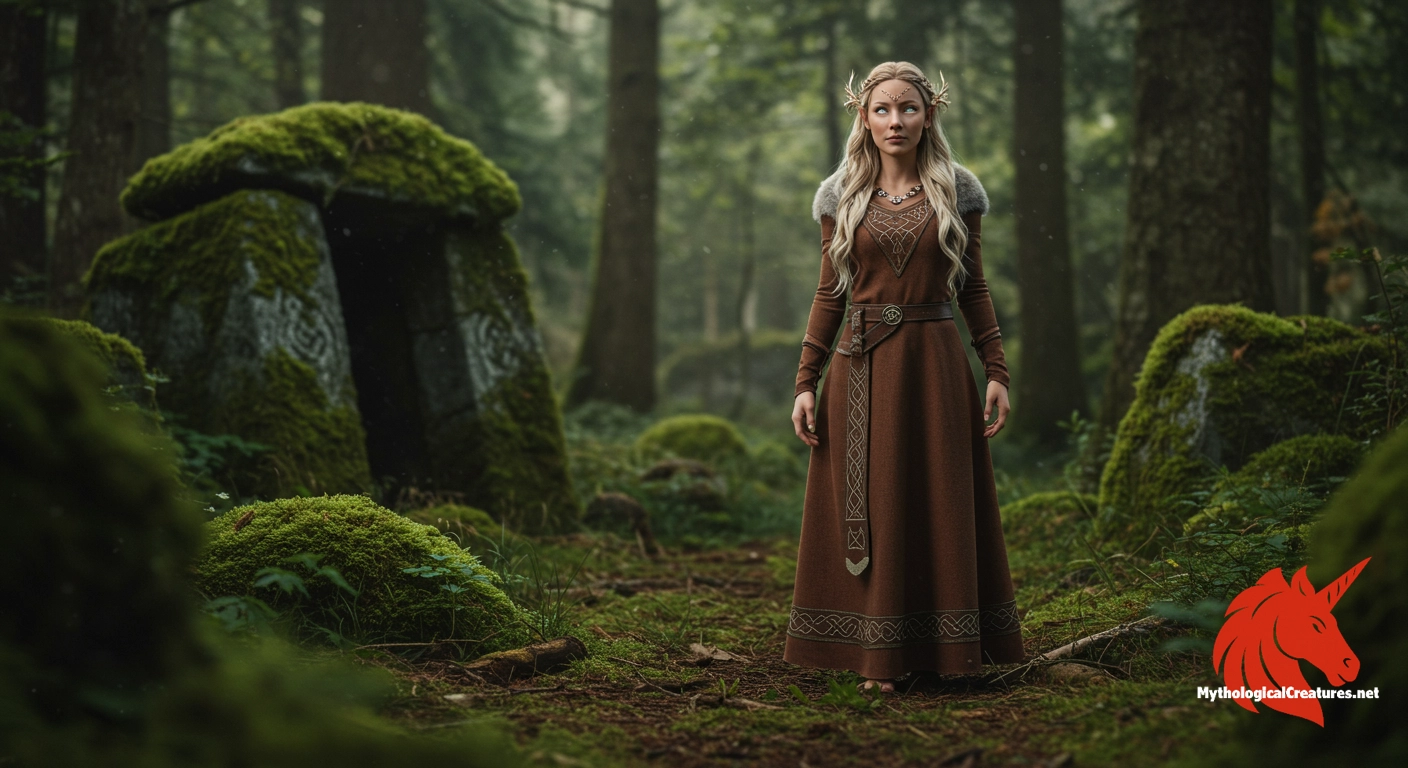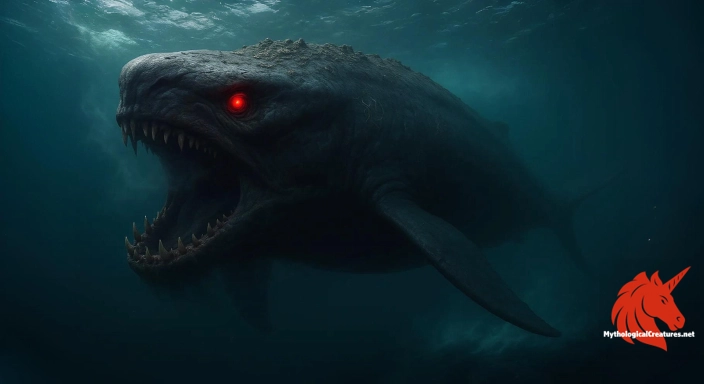Eir: Eir is a Norse goddess associated with healing, protection, and mercy, known for her exceptional medical skills.

Eir
Eir - Eir is renowned for her exceptional medical skill and serves as a symbol of mercy and protection within Norse mythology.
Origins & First Encounters
Eir is a multifaceted figure in Norse mythology whose name—meaning protection, help, and mercy—captures the essence of both healing and martial might. She appears in a tradition that bridges the roles of a benevolent healer and a resolute valkyrie, symbolising the duality of care and combat. Her early attestations are found in texts such as the Poetic Edda and the Prose Edda, which were compiled from older oral traditions. The cultural ambience of early Scandinavia, where survival depended on both healing and heroic feats, provided fertile ground for a deity like Eir. In these ancient narratives, she is portrayed as a divine helper who intervenes in battles as much as she restores health. Her name and character evoke concepts of mercy and protection that resonate deeply with the values of these communities. Throughout the centuries, the interpretation of her myth has evolved, provoking debates over whether she was originally envisioned purely as a healing goddess or as one of the select warrior maidens. Her character continues to reflect the intertwined fate of strength and nurture, making her an enduring emblem in Norse lore and beyond.
Source Texts & Tale Variants
The primary sources that mention Eir include the Poetic Edda and the Prose Edda, both products of the thirteenth century yet rooted in much earlier traditions. Texts like these provide fragmented insights into her character, leaving modern readers to piece together her dual nature from brief references and evocative descriptions. Skaldic poetry further contributes to her myth by embedding subtle allusions to her healing prowess. A notable runic inscription from Bergen, Norway, dating to around 1300, also bears her name and underscores her lasting impact on the Nordic cultural imagination. The variability in these sources has sparked discussions among scholars about whether all references pertain to the same divine figure. Each account highlights differing aspects—some focusing on her curative powers and others emphasising her association with battle and fate. The blending of these narrative strands illustrates how oral tradition and written records can combine to form a complex myth. Despite the incomplete nature of the sources, they collectively affirm Eir’s importance in the spiritual and practical life of early Norse society.
Form & Powers
Although ancient texts offer few concrete physical descriptions of Eir, artistic imagination has filled in many details over time. Often, she is pictured with an aura of serene strength, her expression radiating both kindness and determination. In envisioned depictions, her hair might be rendered as flowing and luminous—sometimes described as silver or golden—enhancing her ethereal presence. She is frequently adorned in a garment that blends the utilitarian aspects of a warrior’s armour with the delicate embroidery emblematic of a healer’s care. The inclusion of intricate runic symbols on her attire underscores her connection to both medicinal lore and divine wisdom. Some portrayals even suggest that she wears a circlet or headpiece that marks her as a being of high status among the gods. Her overall appearance is a harmonious fusion of soft beauty and martial rigour, symbolising the melding of health and heroism. Although regional depictions may differ in detail, a common thread is the depiction of Eir as an imposing yet compassionate figure whose physical form mirrors her multifaceted essence. The evolution of her imagery in art continues to inspire reinterpretations that balance the dualities of nurture and combat.
Regional Faces
Across the Scandinavian landscape, regional interpretations of Eir exhibit a rich tapestry of influences and local adaptations. In Iceland and Norway, where the preservation of Norse traditions remains robust, Eir is often portrayed predominantly as a guardian of health and a facilitator of healing rituals. Local folklore in these regions sometimes emphasises her gentle, restorative aspects, reflecting the communities’ reliance on natural and spiritual remedies. In contrast, certain accounts in Sweden and other parts of the Norse world accentuate her martial prowess, portraying her as a valkyrie who selects the brave in times of conflict. These nuanced regional variations underscore the diverse ways in which societies integrated her myth into their cultural narratives. The rituals, iconography, and oral traditions associated with Eir could differ significantly from one locale to another, with some communities invoking her name in healing incantations and others celebrating her as a protector in battle. This geographical diversity has ensured that her myth remains adaptable, serving as both a symbol of medicinal care and a representation of heroic strength. Each regional interpretation enriches the overall legacy of Eir, attesting to the dynamic nature of myth-making in a multicultural landscape.
Cultural Parallels
The figure of Eir shares striking similarities with healing deities from other cultural traditions, most notably the Greek goddess Hygieia. Like Hygieia, Eir embodies the ideals of health and protection, serving as a divine mediator against the forces of disease and injury. Beyond the Greek tradition, echoes of her character can be found in Roman depictions of Salus and even in certain Celtic traditions where goddesses symbolise the healing arts. Such parallels highlight a universal theme in ancient mythologies where the powers of restoration are inseparable from the experience of conflict and hardship. While Hygieia is typically emblematic of cleanliness and the prevention of illness, Eir fuses these qualities with the fortitude of a warrior spirit. This blend of nurturing and combative traits suggests a complex understanding of how ancient peoples coped with both physical and existential threats. The comparative analysis of these deities reveals that many cultures revered figures who could bridge the gap between life’s battles and the hope of recovery. Cross-cultural studies of myth emphasise the recurring motif of integrating healing with the virtues of sacrifice and valor. Such interconnections remind us that, despite geographical and cultural differences, the human need for both protection and cure is a shared heritage.
Legacy & Modern Evolution
The legacy of Eir has evolved considerably from her early appearances in Norse myth to her modern reinterpretations in literature and art. Medieval texts established her as both a nurturing healer and an esteemed warrior, a duality that resonated in societies where survival depended on both medical knowledge and martial skill. Over the centuries, her image has been continuously reshaped to meet the shifting cultural and social needs of various communities. In modern times, Eir has come to be seen as an emblem of female strength and resilience, inspiring new narratives in the realms of fantasy and popular culture. Contemporary artists and writers often portray her as both an emblem of ancient medical wisdom and a symbol of empowerment that transcends time. Her evolving depiction reflects broader shifts in the understanding of gender roles, healthcare, and heroism. The enduring fascination with her character is evident in how she is invoked in modern discussions about the intersection of healing and strength. Today, Eir is celebrated for her ability to bridge the gap between compassion and courage, making her a timeless figure in both mythological scholarship and creative reinterpretation. Her myth not only honours the traditions of the past but also inspires ongoing dialogue about the roles of divinity in everyday life.
Interesting Fact
Eir is often compared to the Greek goddess Hygieia, emphasizing a common cross-cultural motif in healing deities.
Quick Creature Info
Origin:
Our Mythic Legendary Rating:

Habitat:
Supernatural Powers:
Abilities:
Behavior:
Lore:
Related Creatures, Tales or Lore
- HHygieia
- AAirmid
- BBrigid
References
Discover Another Mythical Legend You May Not Have Heard Of?
Uncover the mysteries of ancient folklore and expand your knowledge of legendary beings from cultures around the world.
Dare to Meet the Devil Whale....
Curated by the Mythological Creatures Team (rev. May 2025)
